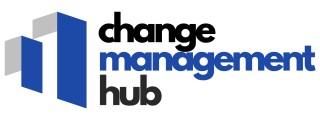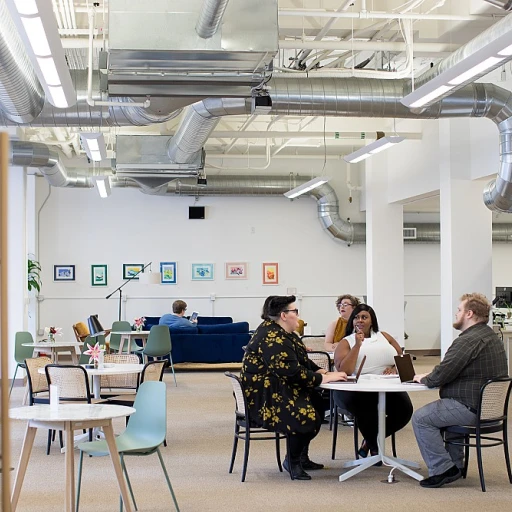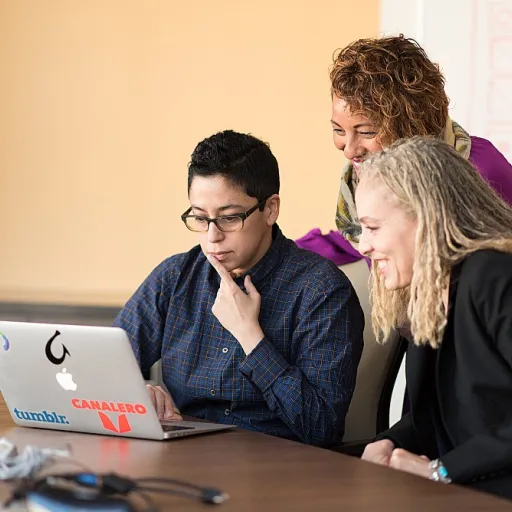
Understanding the link between talent and task variety
Why Task Variety Matters for Talent Engagement
In today’s fast-changing work environment, the connection between talent and task variety is more important than ever. Employees bring a unique mix of skills, competencies, and knowledge to their roles. When these are matched with a diverse range of tasks, it not only keeps the job interesting but also helps the organization adapt to future jobs and challenges. A lack of task variety can lead to wasting talent, lower job satisfaction, and even higher turnover rates.
The Impact of Task Variety on Skills and Motivation
When employees are given new tasks that align with their skills and competencies, it can improve motivation and job satisfaction. This approach helps the organization make better promotion decisions and supports long-term growth. On the other hand, if employees are stuck doing the same tasks for months, job performance and engagement can suffer. Data-driven organizations recognize that keeping top talent engaged means regularly assessing and updating job roles to match evolving skills and business needs.
- Task variety helps employees develop new competencies and stay engaged.
- Matching tasks to skills ensures employees feel valued and challenged.
- Organizations that ignore this link risk losing their best talent to job search opportunities elsewhere.
Understanding the relationship between talent and task variety is a key step in building a strong, adaptable team. It also supports a more effective recruitment process and helps identify subject matter experts within your organization. For those looking to improve their approach, exploring effective employee climate survey questionnaires can provide valuable data on how employees perceive their current tasks and work environment.
Common signs your team needs new challenges
Spotting the Signs: When Your Team Needs Fresh Challenges
Recognizing when employees need new tasks is crucial for any organization aiming to retain top talent and foster a positive work environment. Over time, even the most skilled team members can outgrow their current roles or find their tasks repetitive. This can lead to a decline in job satisfaction and, ultimately, wasted talent if not addressed.
- Declining Engagement: If employees who were once enthusiastic about their work now seem disengaged or less proactive, it may signal that their current tasks no longer challenge their competencies or skills knowledge.
- Plateaued Performance: When performance data shows little improvement or stagnation over months on the job, it could mean that the employee has mastered their current responsibilities and needs new tasks to continue growing.
- Increased Absenteeism: A rise in unplanned absences or frequent breaks might indicate a lack of motivation or fulfillment in the current role.
- Frequent Job Search Activity: Employees who start exploring future jobs or show interest in internal hiring opportunities may be seeking more meaningful work or a better fit for their evolving skills competencies.
- Feedback from Subject Matter Experts: Team members or matter experts may point out that certain employees are ready for more complex tasks or could contribute more to the organization if given new challenges.
- Customer Support or Quality Issues: When employees are not challenged, their attention to detail and customer support can suffer, impacting the organization's reputation and long-term success.
Understanding these signs is the first step to improving your team's experience and ensuring that your talent team is not wasting talent. By being attentive to these indicators, you can make data-driven decisions about promotion, recruitment process adjustments, or the introduction of new tasks skills that align with both employee aspirations and organizational goals.
For more insights on how to keep your team engaged and support seamless change, check out this resource on crafting effective software release notes for seamless change management.
The risks of ignoring talent needs in job roles
Why Overlooking Talent Needs Can Harm Your Organization
When employees are not given new tasks that match their evolving skills and competencies, both the individual and the organization can face significant setbacks. Ignoring the need for fresh challenges in a job role can lead to a decline in job satisfaction, reduced engagement, and even the loss of top talent. Over time, this can impact the overall work environment and the organization’s ability to remain competitive in future jobs.
- Wasting talent: Employees with untapped skills or subject matter expertise may feel undervalued, leading to disengagement or a job search elsewhere. This is especially true for those who have been in the same role for months or even a year ago, with little change in their tasks.
- Stagnant competencies: Without new tasks, employees’ competencies skills can plateau. This not only affects their personal growth but also limits the team’s ability to adapt to changing business needs.
- Missed promotion decisions: A lack of data-driven assessment on employee readiness for new responsibilities can result in missed opportunities for internal hiring or promotion. This can slow down the recruitment process and increase reliance on external hiring.
- Negative impact on customer support: Employees who are not challenged may not improve their skills knowledge, which can affect the quality of customer support and service delivery.
Organizations that fail to recognize when their talent team needs new tasks risk losing their competitive edge in the long term. According to leadership team development in change management research, supporting employees through evolving roles is crucial for building a resilient and agile workforce.
Ultimately, understanding the risks of ignoring talent needs is essential for improving job satisfaction, fostering a positive work environment, and ensuring your organization is prepared for the future.
How to assess readiness for new tasks
Key indicators your team is ready for new challenges
Recognizing when employees are ready for new tasks is crucial for maintaining job satisfaction and supporting long term growth. A data driven approach can help leaders understand if their team’s current roles are still a good fit or if it’s time to introduce fresh responsibilities. Here are practical ways to assess readiness:- Performance consistency: If employees consistently meet or exceed expectations in their current job, it may signal that their skills and competencies are underutilized. This could be a sign they are ready for more complex or varied tasks.
- Feedback and engagement: Regular feedback sessions can reveal if team members feel challenged or if they express interest in learning new skills. A lack of enthusiasm or declining engagement over months on the job may indicate a need for change.
- Skills inventory: Reviewing the skills knowledge and competencies skills of your talent team helps identify gaps between current roles and future jobs. This assessment can also highlight subject matter experts who are ready for broader responsibilities.
- Turnover and job search activity: High turnover or signs that employees are exploring new job opportunities can point to wasted talent. Employees who feel stagnant may start looking elsewhere, impacting your recruitment process and long term retention.
- Customer support and business needs: Changes in customer support demands or organizational goals might require employees to develop new tasks skills. Aligning talent with evolving business needs ensures your organization remains competitive.
Strategies to introduce new tasks effectively
Making Task Transitions Smooth for Everyone
When introducing new tasks to your team, a thoughtful approach can make all the difference. Employees often feel uncertain when their job roles shift, especially if they have been in the same position for months or even a year ago. To ensure a positive experience for both the organization and your talent, consider these practical steps:- Start with clear communication: Explain why new tasks are being introduced and how they align with the long-term goals of the team and organization. This helps employees understand the bigger picture and reduces resistance.
- Assess current skills and competencies: Use data-driven methods to identify which employees have the right skills, knowledge, and competencies for the new tasks. This avoids wasting talent and ensures subject matter experts are matched with the right opportunities.
- Provide training and support: Offer resources to help employees build the skills needed for their new responsibilities. This could include workshops, online courses, or mentoring from matter experts within your team.
- Set realistic expectations: Give employees time to adapt to their new tasks. Recognize that learning new skills and competencies is a process, and job satisfaction often improves when employees feel supported during transitions.
- Monitor progress and gather feedback: Regularly check in with your team to see how they are handling their new roles. Use this data to make adjustments and improve the work environment for everyone.
Supporting talent through change
Building a Supportive Work Environment
When employees take on new tasks, the transition can be both exciting and challenging. A supportive work environment is essential for helping talent adapt and thrive. This means more than just assigning new responsibilities; it involves creating a culture where learning and growth are encouraged.
- Open Communication: Encourage employees to share their experiences and concerns as they take on new roles or tasks. Regular check-ins help managers understand what support is needed and prevent misunderstandings.
- Access to Resources: Provide training, mentorship, or access to subject matter experts. This helps employees build the skills and competencies required for their new tasks, improving job satisfaction and long-term retention.
- Recognition and Feedback: Acknowledge progress and provide constructive feedback. Recognizing effort boosts morale and motivates employees to continue developing their skills knowledge.
- Data-Driven Support: Use data from performance reviews or employee surveys to identify areas where additional support is needed. This approach ensures that support is tailored to individual and team needs, making the recruitment process and promotion decisions more effective.
Encouraging Continuous Learning
Supporting talent through change is not a one-time effort. Organizations should foster a culture of continuous learning, where employees are encouraged to develop new competencies skills over time. This prepares the team for future jobs and helps avoid wasting talent.
- Learning Opportunities: Offer workshops, online courses, or job rotations. These experiences help employees expand their skills competencies and adapt to evolving job requirements.
- Career Pathing: Discuss long-term career goals with employees and align new tasks with their aspirations. This helps retain top talent and ensures that employees see a future within the organization.
Monitoring Progress and Adjusting Support
As employees take on new tasks, it’s important to monitor their progress and adjust support as needed. Regularly review data on performance and job satisfaction to identify any challenges early. This proactive approach helps maintain a positive work environment and ensures that employees feel valued in their roles.
By focusing on these strategies, organizations can improve employee engagement, reduce turnover, and build a resilient talent team ready for the demands of future jobs.













